
Sisak-Moslavina County is a Croatian county in eastern Central Croatia and southwestern Slavonia. It is named after the city of Sisak and the region Moslavina just across the river Sava. According to 2021 census it is inhabited by 141,000 people.
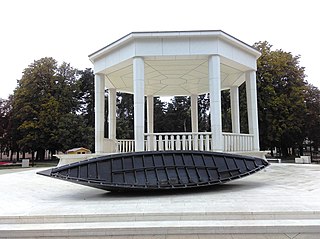
Bjelovar-Bilogora County is a county in central Croatia.
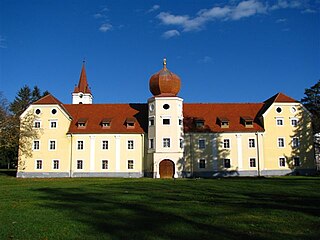
Požega-Slavonia County is a Croatian county in western Slavonia. Its capital is Požega. Its population was 78,034 at the 2011 census.

Brod-Posavina County is the southern Slavonian county in Croatia. Its center is the city of Slavonski Brod and it spreads along the left bank of the Sava river, hence the name Posavina. Other notable towns include Nova Gradiška.

Hrvatska Kostajnica, often just Kostajnica, is a small town in central Croatia. It is located on the Una river in the Sisak-Moslavina County, south of Petrinja and Sisak and across the river from Kostajnica in Bosnia and Herzegovina. In the past, Hrvatska Kostajnica was called by different names, Koztainicha, Kaztanicha to Costgnanica. The name most likely comes from the word Kostanj (chestnut).

Novska is a town in the Sisak-Moslavina County of Croatia. It is located in western part of the historic region of Slavonia, between Kutina and Nova Gradiška, 94 km (58 mi) linear distance southeast of the capital, Zagreb.

Kutina is a town in central Croatia, the largest settlement in the hilly region of Moslavina, in the Sisak-Moslavina County. The town proper has a population of 13,735 (2011), while the total municipal population is 22,760.

Jasenovac is a village and a municipality in Croatia, in the southern part of the Sisak-Moslavina County at the confluence of the river Una into Sava. In Croatian and Serbian word "jasen" means ash tree and the name Jasenovac means "ashen, or made of ash tree". During World War II, it was the site of the Jasenovac concentration camp.

Topusko is a municipality in Sisak-Moslavina County, Croatia. Topusko is an underdeveloped municipality which is statistically classified as the First Category Area of Special State Concern by the Government of Croatia.
Dvor is a municipality in the Banovina region in central Croatia. Administratively it belongs to the Sisak-Moslavina County and is located across the Una River from Novi Grad in Bosnia and Herzegovina. Dvor is an underdeveloped municipality which is statistically classified as the First Category Area of Special State Concern by the Government of Croatia.

Donji Kukuruzari is a village and a municipality in Croatia in the Sisak-Moslavina County. Donji Kukuruzari is underdeveloped municipality which is statistically classified as the First Category Area of Special State Concern by the Government of Croatia.
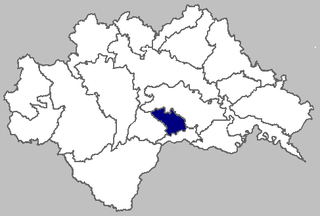
Majur is a settlement and a municipality in central Croatia in the Sisak-Moslavina County. It has a population of 1,185, 70.04% of whom are Croats and 27.26% are ethnic Serbs.
Popovača is a town in Croatia in the Moslavina geographical region. Administratively it is part of the Sisak-Moslavina County.

Sunja is a municipality in Croatia in the Sisak-Moslavina County.

Čepin is a village and a municipality in Osijek-Baranja County, Croatia. It is located in northeast Slavonia, 10 kilometers southwest from Osijek.
The Baćin massacre was the killing of 83 civilians just outside the village of Baćin, near Hrvatska Dubica, committed by Croatian Serb paramilitaries. The killings took place on 21 October 1991 during the Croatian War of Independence. Most of the civilians were Croats, but they also included two ethnic Serbs, taken from Hrvatska Dubica, Baćin and the nearby village of Cerovljani. The civilians were killed in the area of Krečane, at the very bank of the Una River, and their bodies were left unburied for two weeks. Most of them were subsequently bulldozed into a shallow mass grave, while a number of the bodies were thrown into the river.
Podravska Moslavina is a village and a municipality in Osijek-Baranja County, Croatia. There are 1,202 inhabitants in the municipality.
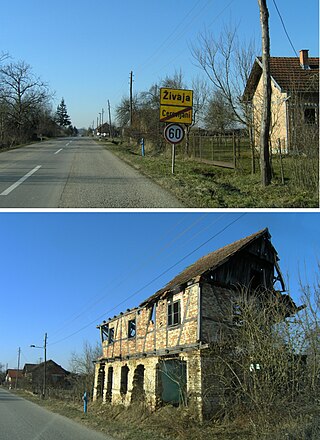
Živaja is a village in central Croatia in Hrvatska Dubica, a municipality of Sisak-Moslavina County.

Slabinja is a village in the Sisak-Moslavina County in the central part of Croatia. It is in the Una Valley near the border with Bosnia and Herzegovina, 12.6 kilometres (7.8 mi) southeast of the town of Hrvatska Kostajnica, 9.7 kilometres (6 mi) northwest of the village of Hrvatska Dubica, and 106 kilometres (66 mi) southeast of Croatian capital Zagreb, at the south fringe of the Banovina region. Slabinja is a dormitory village with a resident population of just over 250 people.
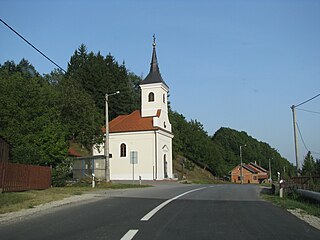
Baćin is a village in the Sisak-Moslavina County in the central part of Croatia. It is in the Una Valley near the border with Bosnia and Herzegovina. Baćin is a dormitory village with a resident population of just over 200 people.





















